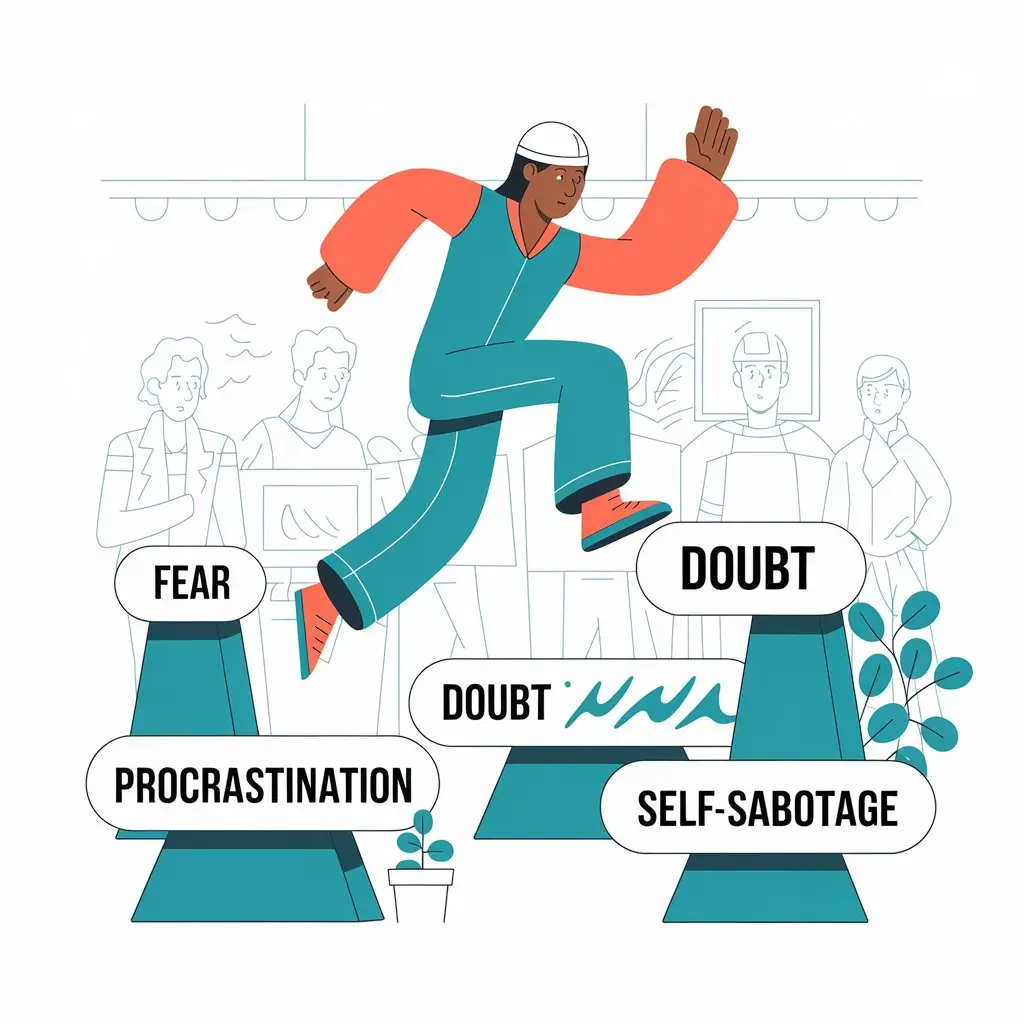Index
- Introduction
- What is Intentional Living?
- Benefits of Living Intentionally
- Understanding Your Values
- Identifying Core Values
- Aligning Actions with Values
- Setting Intentional Goals
- SMART Goals Framework
- Short-term vs. Long-term Goals
- Mindfulness Practices
- Daily Mindfulness Techniques
- Incorporating Mindfulness into Routine
- Creating Meaningful Routines
- Designing Morning and Evening Routines
- The Role of Rituals in Daily Life
- Simplifying Your Environment
- Decluttering for Clarity
- The Impact of Space on Intentional Living
- Building Stronger Relationships
- Communicating with Intent
- Nurturing Meaningful Connections
- Digital Intentionality
- Managing Screen Time
- Curating Your Digital Experience
- Embracing Change and Growth
- Adapting to Life Transitions
- The Importance of Flexibility
- Practicing Gratitude and Reflection
- Daily Gratitude Practices
- Reflecting on Your Journey
- Conclusion
- The Ongoing Journey of Intentional Living
- Encouragement for Future Growth
Introduction
What is Intentional Living?
Intentional living is the practice of making conscious choices aligned with your values and goals. It involves being aware of your actions and their impact on your life, allowing you to create a fulfilling and meaningful existence.
Benefits of Living Intentionally
Living intentionally can lead to greater happiness, reduced stress, and a stronger sense of purpose. It encourages mindfulness, fosters deeper relationships, and helps you prioritize what truly matters.
Understanding Your Values
Identifying Core Values
Identifying your core values is a foundational step in the journey toward intentional living. Values serve as guiding principles that influence your decisions, behaviors, and overall direction in life. Here’s how to uncover what truly matters to you:
- Self-Reflection: Set aside quiet time to reflect on your life experiences. Think about moments when you felt fulfilled, proud, or truly happy. What values were present in those moments?
- Value Lists: Use lists of common values (e.g., honesty, family, creativity, adventure) to help you pinpoint your own. Select five to ten values that resonate most with you.
- Prioritization: Once you have a list, narrow it down to your top five core values. Consider which values you would never compromise on and that you want to prioritize in your life.
- Ask Questions: Engage in self-inquiry with questions like:
- What do I stand for?
- What brings me joy?
- What am I willing to fight for?
- Seek Feedback: Sometimes, those close to you can provide valuable insights. Ask trusted friends or family what they believe are your core values based on their observations.
Aligning Actions with Values
Once you’ve identified your core values, the next step is to align your actions with them. This alignment is crucial for living intentionally and achieving a sense of fulfillment. Here’s how to do it:
- Daily Check-ins: Regularly assess your daily activities. At the end of each day, ask yourself: Did my actions align with my core values? If not, identify areas for improvement.
- Goal Setting: When setting goals, ensure they reflect your values. For example, if one of your core values is health, set fitness goals that are realistic and meaningful to you.
- Decision-Making Framework: Use your values as a framework for decision-making. When faced with choices, ask yourself which option aligns best with your core values. This approach helps clarify your priorities and makes it easier to choose paths that resonate with your beliefs.
- Accountability: Share your values and intentions with a trusted friend or mentor. Having someone to hold you accountable can strengthen your commitment to living in alignment with your values.
- Reevaluation: Life changes, and so may your values. Periodically revisit your list of core values to ensure they still resonate with you. Adjust your actions and goals accordingly to reflect any changes.
- Celebrate Alignment: Acknowledge and celebrate instances when you successfully align your actions with your values. This positive reinforcement encourages continued intentional living.
Setting Intentional Goals
Setting intentional goals is a critical aspect of living a purposeful life. Goals provide direction and motivation, helping you translate your values into actionable steps. Here’s how to effectively set and achieve intentional goals:
SMART Goals Framework
The SMART framework is a widely recognized method for setting effective goals. It ensures your goals are clear and attainable:
- Specific: Define your goal clearly. Instead of saying, “I want to get fit,” specify “I will exercise for 30 minutes, five days a week.”
- Measurable: Establish criteria for measuring progress. This could involve tracking workouts, weight loss, or other relevant metrics.
- Achievable: Ensure your goal is realistic and attainable. While it’s good to challenge yourself, setting an impossible goal can lead to frustration. Assess your current resources and constraints.
- Relevant: Your goal should align with your core values and long-term objectives. Ask yourself how this goal contributes to your overall vision for your life.
- Time-bound: Set a deadline for your goal. Having a timeline creates a sense of urgency and helps you stay focused. For example, “I will complete a 5K run in three months.”
Short-term vs. Long-term Goals
Balancing short-term and long-term goals is essential for maintaining motivation and focus:
- Short-term Goals: These are goals you can achieve in the near future, typically within a few weeks to a few months. They serve as stepping stones toward your long-term goals. For instance, if your long-term goal is to write a book, a short-term goal might be to write a chapter each month.
- Long-term Goals: These are broader objectives that may take a year or more to achieve. They often require sustained effort and commitment. Examples include career aspirations, educational achievements, or significant lifestyle changes.
- Connecting the Dots: Ensure your short-term goals align with your long-term aspirations. This connection helps create a clear path and allows you to see progress over time.
Writing Your Goals Down
Documenting your goals increases accountability and commitment. Consider the following strategies:
- Goal Journal: Maintain a dedicated journal for your goals. Write down your goals, along with the steps you plan to take to achieve them.
- Vision Board: Create a visual representation of your goals. Include images, quotes, and affirmations that inspire you and remind you of your intentions.
- Regular Reviews: Schedule regular check-ins (weekly or monthly) to review your goals. Reflect on your progress, celebrate achievements, and adjust your action plans as needed.
Staying Motivated
Maintaining motivation can be challenging, but there are strategies to help you stay on track:
- Break It Down: Divide larger goals into smaller, manageable tasks. This makes the process less overwhelming and allows for regular feelings of accomplishment.
- Celebrate Milestones: Acknowledge and celebrate your achievements, no matter how small. This positive reinforcement boosts motivation and encourages continued effort.
- Stay Flexible: Life can be unpredictable. Be prepared to adapt your goals as circumstances change. Flexibility allows you to respond to new opportunities and challenges without losing sight of your intentions.
- Seek Support: Share your goals with supportive friends or family members. Having a support system can provide encouragement and accountability, making the journey more enjoyable.
Mindfulness Practices
Mindfulness practices are essential tools for living intentionally. They cultivate awareness of the present moment, helping you connect with your thoughts, emotions, and surroundings. By integrating mindfulness into your daily life, you can enhance your overall well-being and deepen your sense of purpose. Here’s how to get started:
Daily Mindfulness Techniques
- Mindful Breathing: One of the simplest ways to practice mindfulness is through focused breathing. Take a few moments to sit comfortably, close your eyes, and pay attention to your breath. Inhale deeply through your nose, hold for a moment, then exhale slowly through your mouth. Repeat this for several minutes, allowing your mind to settle.
- Body Scan Meditation: This technique involves mentally scanning your body for areas of tension or discomfort. Start at your toes and gradually move up to your head, noticing how each part of your body feels. This practice fosters a deeper connection to your physical self and promotes relaxation.
- Mindful Eating: Transform meals into a mindful practice by eating slowly and savoring each bite. Focus on the flavors, textures, and aromas of your food. Avoid distractions, such as screens, and truly engage with the experience of eating.
- Mindful Walking: Take a walk with awareness. Pay attention to the sensation of your feet touching the ground, the rhythm of your breath, and the sights and sounds around you. This practice combines movement with mindfulness, making it a great way to connect with nature.
- Journaling: Set aside time each day to write in a journal. Reflect on your thoughts, feelings, and experiences. Journaling can help clarify your mind, process emotions, and deepen your self-awareness.
Incorporating Mindfulness into Routine
- Morning Mindfulness: Start your day with mindfulness practice. Whether it’s five minutes of meditation, mindful stretching, or setting intentions for the day, creating a mindful morning routine sets a positive tone for the rest of the day.
- Mindfulness Breaks: Throughout your day, take short breaks to practice mindfulness. Pause for a minute or two to check in with yourself, breathe deeply, or observe your surroundings. These mini practices can help reduce stress and enhance focus.
- Mindful Transitions: Use transitional moments, like commuting or waiting in line, as opportunities for mindfulness. Instead of scrolling through your phone, practice deep breathing or notice your surroundings.
- Evening Reflection: Conclude your day with mindfulness practice. Reflect on your experiences, express gratitude for the day, and release any lingering stress. This can promote better sleep and a sense of closure.
- Mindfulness in Relationships: Engage in mindful communication with others. Practice active listening, maintain eye contact, and respond thoughtfully. This deepens connections and fosters understanding.
Benefits of Mindfulness
- Reduced Stress: Regular mindfulness practice can lower stress levels, helping you manage anxiety and overwhelm more effectively.
- Enhanced Focus: Mindfulness improves your ability to concentrate by training your mind to stay present, reducing distractions.
- Greater Emotional Regulation: Mindfulness fosters awareness of your emotions, enabling you to respond to them more skillfully rather than reacting impulsively.
- Improved Well-being: By cultivating a mindset of gratitude and acceptance, mindfulness enhances overall life satisfaction and promotes a positive outlook.
- Stronger Relationships: Mindfulness nurtures empathy and compassion, leading to healthier interpersonal relationships and better communication.
Creating Meaningful Routines
Creating meaningful routines is a vital component of intentional living. Routines provide structure, promote productivity, and help you cultivate habits that align with your values and goals. When crafted thoughtfully, routines can enhance your daily experience and contribute to a fulfilling life. Here’s how to develop meaningful routines:
Designing Morning and Evening Routines
- Morning Routine: Start your day with intention by establishing a morning routine that sets a positive tone. Here are some elements to consider:
- Wake Up Early: Give yourself enough time to wake up without rushing. This allows for a calm start to your day.
- Mindfulness Practice: Incorporate mindfulness techniques, such as meditation or deep breathing, to center yourself before the day begins.
- Physical Activity: Engage in light exercise or stretching to energize your body. This could include yoga, a brisk walk, or a quick workout.
- Healthy Breakfast: Fuel your body with nutritious food. Take time to enjoy your meal mindfully, appreciating the flavors and nourishment it provides.
- Set Intentions: Reflect on your goals for the day. What do you want to achieve? Setting clear intentions helps guide your actions and decisions.
- Evening Routine: Wind down your day with a calming evening routine. Consider these components:
- Disconnect from Screens: Limit screen time at least an hour before bed to reduce blue light exposure and promote better sleep.
- Reflection and Gratitude: Spend a few minutes journaling about your day. Reflect on what went well and express gratitude for positive experiences.
- Relaxation Techniques: Engage in activities that help you relax, such as reading, taking a warm bath, or practicing gentle yoga.
- Prepare for Tomorrow: Lay out clothes, plan meals, or set goals for the next day. This reduces morning stress and helps you feel organized.
The Role of Rituals in Daily Life
Integrating rituals into your routines can add depth and meaning to your daily practices. Rituals are intentional actions that hold personal significance and can enhance your connection to your values. Here’s how to incorporate rituals:
- Identify Meaningful Rituals: Think about activities that resonate with you and bring joy. This could be lighting a candle before meditation, saying a specific affirmation, or enjoying a cup of tea mindfully.
- Consistency: Make these rituals a regular part of your routines. Consistency reinforces their significance and helps you cultivate a deeper connection over time.
- Celebrate Milestones: Create rituals to celebrate achievements or transitions in your life. This could be a special meal for completing a project or a small ceremony for marking personal growth.
- Incorporate Nature: Consider rituals that connect you to nature, such as taking daily walks in a park, gardening, or simply observing natural beauty. This fosters a sense of grounding and peace.
Evaluating and Adjusting Your Routines
- Regular Reflection: Periodically assess your routines to determine their effectiveness. Are they helping you live intentionally? Reflect on what’s working and what’s not.
- Stay Flexible: Life is dynamic, and your routines may need to evolve. Be willing to adjust your routines to accommodate changes in your circumstances or priorities.
- Experiment: Don’t be afraid to try new practices or elements in your routines. Experimenting can lead to discoveries that enhance your daily experience.
- Incorporate Feedback: If you share your routines with a supportive friend or family member, seek feedback. They may offer valuable insights or suggestions for improvement.
The Benefits of Meaningful Routines
- Enhanced Productivity: Routines provide a framework that helps you stay focused and organized, making it easier to accomplish tasks and goals.
- Increased Mindfulness: Engaging in intentional routines fosters mindfulness, allowing you to be present and fully experience each moment.
- Reduced Decision Fatigue: Routines minimize the number of daily decisions you need to make, reducing mental fatigue and stress.
- Stronger Sense of Purpose: By aligning your routines with your values and intentions, you cultivate a stronger sense of purpose and fulfillment in your daily life.
Simplifying Your Environment
Simplifying your environment is a crucial step toward intentional living. A cluttered space can lead to a cluttered mind, making it challenging to focus on what truly matters. By creating a simplified and organized environment, you can enhance your well-being, boost productivity, and foster a sense of peace. Here’s how to effectively simplify your surroundings:
Decluttering for Clarity
- Assess Your Space: Start by evaluating your living and working spaces. Identify areas that feel cluttered or overwhelming. Pay attention to how these spaces affect your mood and productivity.
- The 3-Box Method: Use the three-box method to declutter:
- Keep: Items that you use regularly or that bring you joy.
- Donate/Sell: Items in good condition that you no longer need or use.
- Trash: Broken or unusable items that take up space.
- One Room at a Time: Focus on decluttering one room or area at a time. This prevents overwhelm and allows you to see progress more clearly.
- Set a Timer: Dedicate a specific amount of time to decluttering. Setting a timer (e.g., 30 minutes) can help you stay focused and make the task less daunting.
- Emotional Attachment: Be mindful of emotional attachments to items. Consider whether the item adds value to your life or if it’s simply taking up space. Letting go can be liberating.
The Impact of Space on Intentional Living
- Create a Calming Atmosphere: Use color, lighting, and decor to create a calming environment. Soft colors, natural light, and minimalistic decor can foster tranquility and focus.
- Designated Spaces: Create specific areas for different activities (e.g., work, relaxation, creativity). This helps establish boundaries and enhances your ability to engage fully in each activity.
- Organizational Tools: Invest in organizational tools like storage bins, shelves, and planners. These can help keep your space tidy and make it easier to find what you need.
- Incorporate Nature: Bringing elements of nature into your environment can enhance your sense of well-being. Consider adding plants, natural materials, or artwork that reflects nature.
- Mindful Decor: Choose decor that resonates with your values and brings you joy. Avoid cluttering your space with items that don’t serve a purpose or enhance your life.
Maintaining a Simplified Environment
- Regular Decluttering: Make decluttering a regular practice. Set aside time weekly or monthly to assess your space and remove items that no longer serve you.
- One In, One Out Rule: Implement the “one in, one out” rule. When you bring a new item into your space, consider letting go of an existing item. This helps prevent clutter from accumulating.
- Daily Tidying: Spend a few minutes each day tidying up. Small daily efforts can keep your environment organized and reduce overwhelm.
- Mindful Purchasing: Before making new purchases, consider whether the item aligns with your values and if you truly need it. Mindful purchasing prevents unnecessary clutter.
- Create a Cleaning Schedule: Establish a cleaning routine that works for you. Regular cleaning helps maintain a tidy environment and promotes a sense of order.
The Benefits of a Simplified Environment
- Increased Focus: A decluttered space reduces distractions, allowing you to concentrate on tasks and goals more effectively.
- Enhanced Creativity: A simplified environment fosters creativity by providing a clear space for inspiration and exploration.
- Reduced Stress: Clutter can contribute to feelings of anxiety and overwhelm. A tidy, organized space promotes relaxation and peace of mind.
- Greater Clarity: Simplifying your environment allows you to focus on what truly matters, enhancing your sense of purpose and direction.
Building Stronger Relationships
Building stronger relationships is a vital aspect of intentional living. Meaningful connections enhance your overall well-being, provide support during challenges, and contribute to a fulfilling life. By cultivating intentional relationships, you can create a network of support that aligns with your values and enhances your sense of community. Here’s how to foster deeper connections with others:
Communicating with Intent
- Active Listening: Practice active listening by fully engaging with the speaker. This means putting away distractions, maintaining eye contact, and giving verbal and non-verbal cues that show you are attentive. Reflect back what you’ve heard to confirm understanding.
- Ask Open-Ended Questions: Encourage deeper conversations by asking open-ended questions that invite others to share their thoughts and feelings. For example, instead of asking, “Did you have a good day?” try, “What was the highlight of your day?”
- Be Present: Make a conscious effort to be present during conversations. Avoid multitasking and give your full attention to the person you’re speaking with. This demonstrates respect and fosters a deeper connection.
- Express Yourself Honestly: Share your thoughts and feelings openly and authentically. Vulnerability can strengthen relationships by building trust and creating a safe space for others to do the same.
- Practice Empathy: Try to understand and validate the feelings of others. Empathy fosters connection and shows that you care about their experiences and emotions.
Nurturing Meaningful Connections
- Quality Over Quantity: Focus on nurturing a few meaningful relationships rather than spreading yourself too thin. Invest time and energy into relationships that align with your values and bring you joy.
- Schedule Regular Check-Ins: Make it a habit to check in with friends and loved ones regularly. A simple text, phone call, or coffee date can strengthen your bond and show that you care.
- Create Shared Experiences: Engage in activities that you both enjoy. Whether it’s attending events, trying new hobbies, or simply spending time together, shared experiences enhance connection and create lasting memories.
- Be Supportive: Offer support during challenging times. Being there for someone when they need it most strengthens the bond and demonstrates your commitment to the relationship.
- Celebrate Achievements: Acknowledge and celebrate milestones and achievements in each other’s lives. This can be as simple as sending a congratulatory message or planning a small celebration.
Building a Support Network
- Identify Your Circle: Take stock of your current relationships and identify individuals who uplift and support you. Surround yourself with people who share your values and encourage your growth.
- Seek New Connections: Be open to meeting new people who align with your interests and values. Join clubs, attend workshops, or participate in community events to expand your network.
- Be Vulnerable: Opening up to others can lead to deeper connections. Share your experiences, challenges, and aspirations, allowing others to feel comfortable doing the same.
- Practice Reciprocity: Relationships thrive on mutual support. Ensure that you’re giving as much as you’re receiving. This balance fosters trust and strengthens the bond.
- Cultivate Diversity: While it’s important to have relationships that align with your values, consider cultivating connections with people from diverse backgrounds and perspectives. This enriches your understanding of the world and fosters personal growth.
The Benefits of Stronger Relationships
- Emotional Support: Strong relationships provide emotional support during difficult times, helping you navigate challenges with resilience and confidence.
- Increased Happiness: Meaningful connections contribute to overall happiness and life satisfaction. Sharing experiences and building memories with others enhances joy.
- Improved Mental Health: Positive relationships can reduce feelings of loneliness and anxiety, promoting better mental health and well-being.
- Personal Growth: Engaging with others allows for the exchange of ideas and perspectives, fostering personal growth and development.
- Sense of Belonging: Strong relationships create a sense of community and belonging, which is essential for overall well-being.
Digital Intentionality
In today’s digital age, being intentional about how you engage with technology is crucial for maintaining balance and well-being. Digital intentionality involves consciously managing your online presence and interactions to align with your values and enhance your overall quality of life. Here’s how to practice digital intentionality:
Assessing Your Digital Habits
- Self-Reflection: Take time to reflect on your current digital habits. How much time do you spend on devices? What activities do you engage in online? Consider how these habits impact your mood, productivity, and relationships.
- Track Your Screen Time: Use apps or built-in features on your devices to track your screen time. This can help you identify patterns and areas where you may want to cut back.
- Evaluate Social Media Use: Assess your social media accounts. Are they contributing positively to your life, or do they often lead to comparison and negativity? Consider which platforms enhance your well-being and which may need to be limited or removed.
Setting Intentional Boundaries
- Designate Tech-Free Times: Establish specific times during the day when you disconnect from digital devices. This could be during meals, family time, or before bed. Use this time to engage in offline activities that nourish your mind and relationships.
- Limit Notifications: Turn off non-essential notifications on your devices. Constant alerts can lead to distractions and anxiety. Instead, check messages and updates at designated times.
- Create Device-Free Zones: Designate certain areas in your home (e.g., the dining room or bedroom) as device-free zones. This encourages more meaningful interactions and helps you be present in the moment.
- Use Technology Mindfully: Be intentional about how you use technology. Ask yourself if your online activities align with your values and goals. Choose to engage in content that inspires and uplifts you.
Curating Your Digital Environment
- Follow Positive Influences: Curate your social media feeds and online content by following accounts that inspire, educate, or motivate you. Unfollow or mute accounts that contribute to negativity or stress.
- Organize Digital Spaces: Keep your digital environment organized by decluttering your email inbox, organizing files, and limiting bookmarks to essential sites. A tidy digital space can enhance focus and reduce overwhelm.
- Engage in Meaningful Interactions: Use digital platforms to foster meaningful connections. Share experiences, support friends, and engage in discussions that align with your values.
- Limit Passive Consumption: Be mindful of how much time you spend consuming media passively (e.g., scrolling through social media). Instead, seek out content that encourages active engagement, such as educational videos or interactive platforms.
Practicing Mindfulness in Digital Engagement
- Mindful Consumption: Before engaging with digital content, take a moment to assess your motivation. Are you seeking inspiration, distraction, or connection? Being aware of your intentions can guide your online behavior.
- Digital Detox: Consider taking regular breaks from technology. A digital detox can help reset your relationship with devices and allow you to reconnect with the present moment.
- Reflect on Your Online Presence: Regularly evaluate how your online presence aligns with your values. Consider whether your digital persona reflects your true self and contributes positively to your life.
- Engage in Offline Activities: Balance your digital interactions with offline activities that bring you joy, such as reading, exercising, or spending time in nature. This fosters a well-rounded life.
The Benefits of Digital Intentionality
- Improved Focus: Setting boundaries and minimizing distractions enhances your ability to concentrate on important tasks and goals.
- Enhanced Well-Being: Curating a positive digital environment and engaging mindfully with technology can reduce stress and improve your overall mental health.
- Stronger Relationships: Meaningful digital interactions can strengthen connections with others, fostering a sense of community and support.
- Increased Productivity: Being intentional about your digital habits can lead to greater productivity and efficiency in both personal and professional endeavors.
8. Embracing Change and Growth
Embracing change and growth is a fundamental aspect of intentional living. Life is dynamic, and the ability to adapt to change can lead to personal development, new opportunities, and a deeper understanding of yourself. Here’s how to cultivate a mindset that welcomes change and fosters growth:
Understanding the Nature of Change
- Acceptance: Recognize that change is a natural part of life. Accepting this reality can alleviate resistance and open you up to new possibilities.
- Embrace Uncertainty: Change often brings uncertainty, which can be uncomfortable. Instead of fearing the unknown, view it as an opportunity for exploration and discovery.
- Reflect on Past Changes: Consider past changes in your life and how they led to growth. Reflecting on these experiences can help you realize your capacity to adapt and thrive.
Cultivating a Growth Mindset
- Adopt a Learning Orientation: Embrace challenges as opportunities to learn and grow. When faced with obstacles, ask yourself what lessons you can take away from the experience.
- Focus on Effort Over Outcome: Shift your focus from solely achieving results to valuing the effort you put into the process. Celebrate your hard work and resilience, regardless of the outcome.
- Embrace Feedback: View feedback as a valuable tool for growth. Be open to constructive criticism and use it to improve your skills and understanding.
- Set Growth-Oriented Goals: Instead of only setting goals based on outcomes (e.g., losing weight), consider goals that focus on personal development (e.g., adopting a healthier lifestyle or learning new cooking skills).
Navigating Change with Intention
- Identify Your Values: When faced with change, reconnect with your core values. This will help you navigate decisions and actions that align with what truly matters to you.
- Create a Support System: Surround yourself with supportive individuals who encourage growth and change. Share your experiences and seek advice from friends, mentors, or family members.
- Practice Self-Compassion: Change can be challenging, and it’s important to be kind to yourself during the process. Acknowledge your feelings and give yourself grace as you navigate transitions.
- Take Small Steps: Break down larger changes into manageable steps. This approach makes the process less overwhelming and allows you to celebrate small victories along the way.
Embracing Lifelong Learning
- Pursue New Experiences: Seek out new experiences that challenge your comfort zone. This could include taking up a new hobby, traveling to new places, or meeting new people.
- Read and Explore: Engage with books, articles, and resources that inspire growth and learning. Exploring diverse perspectives can enrich your understanding and spark new ideas.
- Reflect Regularly: Set aside time for self-reflection to assess your growth journey. Consider what you’ve learned, how you’ve changed, and areas where you’d like to continue evolving.
- Stay Curious: Cultivate a sense of curiosity about the world around you. Ask questions, seek knowledge, and remain open to new ideas and perspectives.
The Benefits of Embracing Change and Growth
- Increased Resilience: Embracing change builds resilience, helping you navigate life’s challenges with greater ease and confidence.
- Enhanced Adaptability: A growth mindset fosters adaptability, allowing you to adjust to new situations and thrive in varying circumstances.
- Personal Fulfillment: Engaging in growth and embracing change can lead to a deeper sense of fulfillment and purpose in life.
- Broader Perspectives: Embracing new experiences and challenges expands your worldview, enriching your understanding of yourself and others.
Practicing Gratitude and Reflection
Practicing gratitude and reflection is essential for cultivating a positive mindset and fostering intentional living. These practices help you appreciate the present moment, recognize your achievements, and deepen your understanding of yourself. Here’s how to effectively integrate gratitude and reflection into your daily life:
The Power of Gratitude
- Daily Gratitude Journaling: Set aside a few minutes each day to write down three to five things you are grateful for. This practice shifts your focus from what you lack to what you have, enhancing your overall outlook on life.
- Express Gratitude Verbally: Make it a habit to express gratitude to those around you. Whether it’s a simple “thank you” or a more elaborate note, acknowledging others’ contributions strengthens your connections and fosters positivity.
- Gratitude Jar: Create a gratitude jar by writing down moments of gratitude on slips of paper and placing them in the jar. Review the contents periodically to remind yourself of the positive experiences in your life.
- Mindful Appreciation: Take moments throughout your day to pause and appreciate your surroundings. Notice the beauty in nature, the comfort of your home, or the kindness of others. Mindful appreciation enhances your awareness of the present.
Reflection for Personal Growth
- Set Aside Reflection Time: Dedicate regular time for self-reflection, this could be weekly or monthly. Use this time to assess your experiences, emotions, and growth.
- Ask Reflective Questions: Engage in self-inquiry by asking thought-provoking questions, such as:
- What did I learn this week?
- What challenges did I face, and how did I overcome them?
- How did I align my actions with my values?
- Use a Reflection Journal: Keep a journal specifically for reflection. Write about your thoughts, feelings, and insights, allowing you to track your growth over time.
- Celebrate Achievements: Reflect on your accomplishments, no matter how small. Acknowledge the progress you’ve made toward your goals and celebrate your successes.
Combining Gratitude and Reflection
- Gratitude and Reflection Ritual: Create a ritual that combines gratitude and reflection. For example, at the end of each day, reflect on what you are grateful for and what you learned. This practice can enhance your sense of fulfillment.
- Monthly Reflection on Gratitude: At the end of each month, review your gratitude journal entries. Reflect on patterns, significant moments, and how gratitude has impacted your life.
- Gratitude Letters: Write letters to individuals who have positively influenced your life. Share your appreciation and reflect on their impact. This can deepen your connections and reinforce positive relationships.
The Benefits of Gratitude and Reflection
- Improved Mental Health: Regularly practicing gratitude is linked to reduced symptoms of anxiety and depression. It promotes a more positive outlook on life.
- Increased Resilience: Reflecting on your experiences, especially challenges, helps build resilience. Recognizing your growth fosters a sense of strength and adaptability.
- Enhanced Self-Awareness: Reflection deepens your understanding of your thoughts, feelings, and behaviors. This self-awareness is essential for personal growth and intentional living.
- Strengthened Relationships: Expressing gratitude and reflecting on positive interactions enhances your connections with others, fostering a supportive network.
Living intentionally is an ongoing journey that requires continuous reflection and adjustment as you navigate life’s complexities. Embrace the process of intentional living, knowing that each small step you take contributes to a more fulfilling and meaningful life. By committing to this journey, you cultivate a deeper understanding of yourself and your values, fostering personal growth and enriching your experiences.
Conclusion
As you continue on your path of intentional living, remember that every effort counts. Celebrate your progress, remain open to change, and let your journey inspire both yourself and those around you. Embracing intentionality not only enhances your own life but also creates a ripple effect, encouraging others to pursue their own meaningful journeys.



























